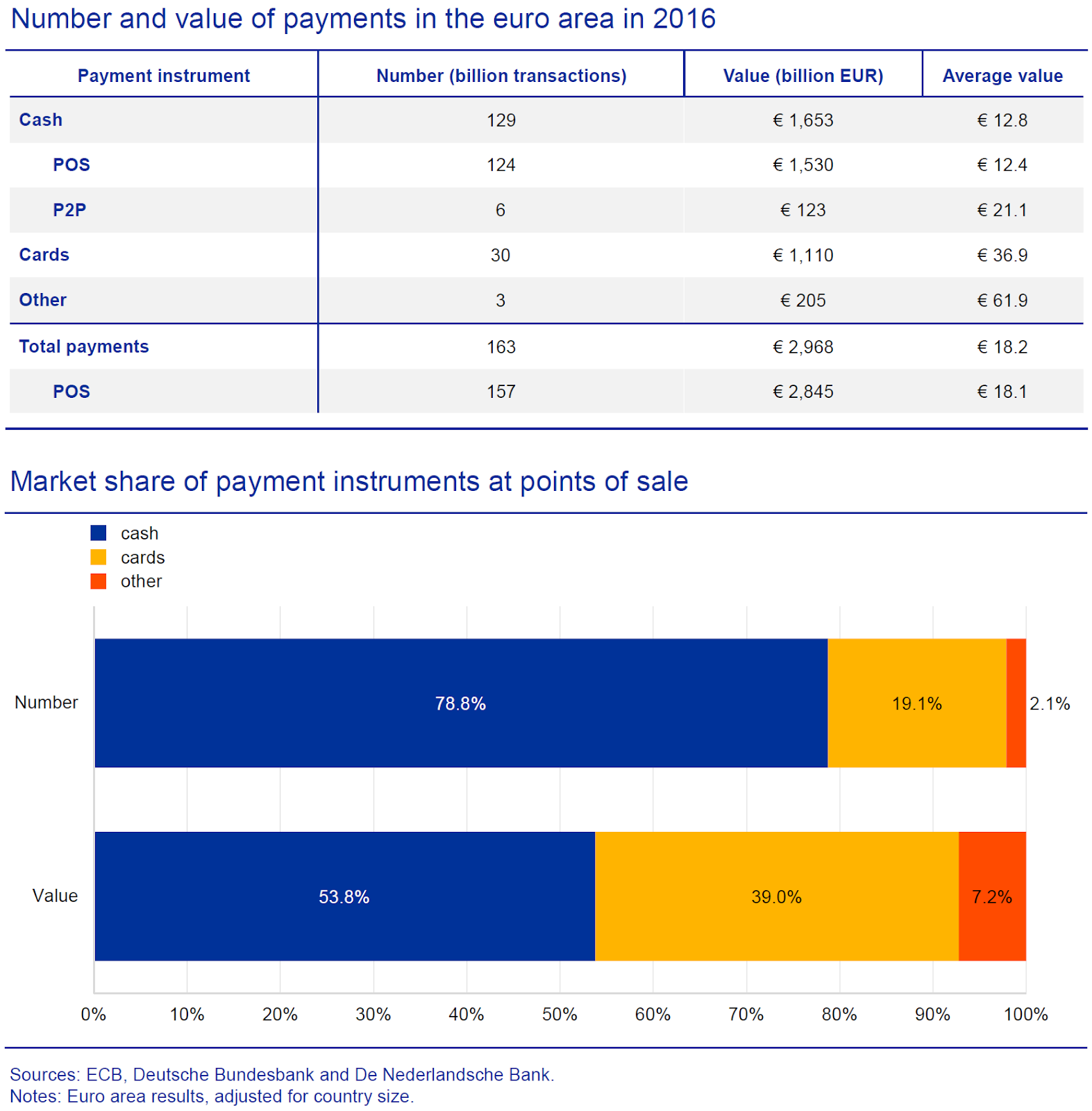Although euro banknotes and coins have been
in circulation for seventeen (17) years, not much is known about the actual use
of cash by households. A study from European Central Bank (ECB) in 2017 aimed
to shed light on consumers’ payment behavior and to improve the understanding
of consumers’ payment choices at points of sale (POS).
The survey results show that in 2016 cash was the dominant payment instrument at POS. In terms of number, 79% of all transactions were carried out using cash, amounting to 54% of the total value of all payments. Cards were the second most frequently used payment instrument at POS; 19% of all transactions were settled using a payment card. In terms of value, this amounts to 39% of the total value paid at POS.
The survey results show that in 2016 cash was the dominant payment instrument at POS. In terms of number, 79% of all transactions were carried out using cash, amounting to 54% of the total value of all payments. Cards were the second most frequently used payment instrument at POS; 19% of all transactions were settled using a payment card. In terms of value, this amounts to 39% of the total value paid at POS.
In terms of number of transactions, cash was
most used in the southern euro area countries, as well as in Germany, Austria
and Slovenia, where 80% or more of POS transactions were conducted with cash.
Cash was least used in the Netherlands, Estonia and Finland, where its share in
the number of transactions ranged between 45% and 54%.
In terms of value, the share of cash was
highest in Greece, Cyprus and Malta (above 70%), while it was lowest in the
Benelux countries, Estonia, France and Finland (at, or below, 33%). In 2016, euro
area consumers made 163 billion payments by means of cash, payment cards or
other payment instruments, amounting to more than 2,968 billion euros.
On a daily basis, consumers spent on average
18 euros every time they made a payment at POS using cash, cards or other means
instruments. Most POS payments carried out by consumers involved lower
transaction values; over a third of payments were lower than 5 euros, and 65%
were lower than 15 euros. Conversely, only two in over 100 payments were worth
more than 100 euros.
In 2016, euro area consumers carried on
average 65 euros in their wallet. Germans carried on average the most (103
euros) in their pockets, followed by the Luxembourgers (102 euros), the
Austrians (89 euros), the Cypriots (81 euros) and the Greek consumers (80
euros). On the other hand, the Portuguese carried, on average, the least (29
euros), followed by the French (32 euros) and the Latvians (41 euros).
Finally, the top three perceived advantages
of using cash reported by the respondents who said to prefer cash are that it
gives a clear overview of expenses (42%), it is widely accepted (38%) and it is
fast (32%). The fact that cash is "anonymous" is only a reason to
prefer its use for a limited number of respondents (13%). On the other hand,
the top three advantages of using cards mentioned by respondents who said to
prefer cards are that card payments are easy (40%), fast (35%) and that it is
not necessary to check the amount of cash in your wallet (33%).
It is
also important to mention that the trend towards a cashless society has also
continued, a trend that risks leaving countries such as Sweden without
functioning cash soon. New technology is leading to new, convenient ways of
paying becoming available, such as mobile applications.


























0 comments:
Post a Comment